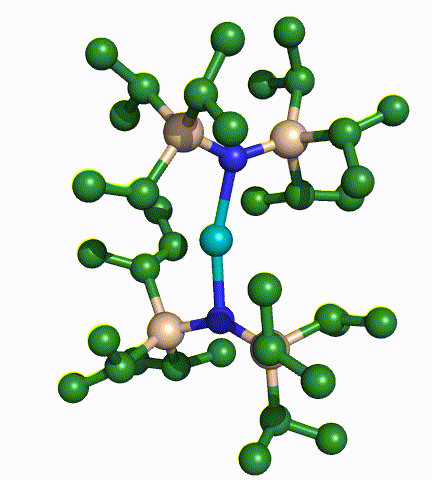Tiny Magnets Take a Giant Leap with 100 Kelvin Breakthrough
How a record-breaking molecule, stable at 100 K, brings ultra-dense data storage and quantum computing closer to reality.
For decades, scientists have chased a dream of harnessing the power of a single molecule to act as a magnet. Imagine a hard drive where every bit of data, every 1 and 0, is stored on an individual molecule. The storage density would be almost unimaginable. The problem has always been that these "single-molecule magnets," or SMMs, are incredibly fragile. They lose their magnetic memory unless cooled to temperatures colder than deep space.
Until now. A landmark study published in Nature by Emerson-King et al. reports the creation of a molecule that shatters previous records, holding its magnetic state steady at a remarkable 100 Kelvin (−173°C / −280°F).¹ This is more than just an incremental improvement. It is a monumental step toward making molecular-scale technologies a practical reality.
Did You Know?
Data Storage smaller than a Pinhead: If we could build a hard drive using SMMs, you could theoretically store the entire content of every book in the Library of Congress on a device the something like the size of a postage stamp.
Beyond 1s and 0s: Unlike a classic computer bit that is either a 1 or a 0, the quantum state of an SMM can be both at the same time. This property makes them a leading candidate for building the "qubits" needed for quantum computers.
A Magnet of One: A fridge magnet works because trillions of atoms align their magnetic fields. A single-molecule magnet is fundamentally different. In an SMM, the entire molecule acts as one cohesive unit and becomes a tiny, perfect magnet.
Breaking the 100 K Barrier
The "blocking temperature" is the all-important number for an SMM. Below this temperature, it can hold magnetic information; above it, its memory is lost by thermal energy. The previous record, set in 2017, was an impressive 60 K.² This new molecule, a cleverly designed dysprosocenium (or “sandwich”) complex, doesn't just beat that record. It soars past it to reach 100 K.
Why is this so important? Because 100 K is warmer than liquid nitrogen (77 K). This means any future device using these molecules could be cooled with cheap, abundant liquid nitrogen instead of extremely expensive and increasingly scarce liquid helium. It’s the difference between a niche laboratory curiosity and a technology that could be built and used around the world.
A Perfect Molecular Cage Is the Secret to Its Success
So, how did the researchers achieve this? They essentially built a molecular fortress. The central dysprosium atom, which provides the magnetic muscle, is protected by a perfectly symmetrical "cage" of other atoms. This rigid structure shields the magnet from outside vibrations and prevents its magnetic state from spontaneously flipping through a phenomenon known as quantum tunneling.
By creating this near-perfect molecular environment, the team built a magnet that is incredibly resistant to losing its information, allowing it to function at a temperature once thought impossible for a single molecule.¹
What This Means for the Future
While there are still hurdles to overcome, such as arranging these molecules on a surface and reading their states reliably, this discovery makes the path forward much clearer. It proves that the fundamental physics allows for robust molecular magnets and gives scientists a blueprint for creating even better ones.
The road ahead involves refining these molecules, exploring ways to mass-produce them, and engineering the hardware that can interface with them. But the most significant barrier, the temperature wall, has now been dramatically pushed back.
Outlook
The work by Emerson-King and colleagues has redefined the limits of what's possible in molecular magnetism. By creating a single molecule that acts as a magnet at 100 K, they have laid the foundation for a new generation of technology. The age of practical molecular magnets is seemingly no longer a distant dream; it's a milestone we can now see on the horizon.
References
Emerson-King, J., Gransbury, G.K., Atkinson, B.E. et al. Soft magnetic hysteresis in a dysprosium amide–alkene complex up to 100 kelvin. Nature 643, 125–129 (2025). https://doi.org/10.1038/s41586-025-09138-0
Goodwin, C. A. P., Ortu, F., Reta, D., Chilton, N. F., & Mills, D. P. (2017). Molecular magnetic hysteresis at 60 kelvin in dysprosocenium. Nature, 548, 439–442.
Leuenberger, M. N., & Loss, D. (2001). Quantum computing in molecular magnets. Science, 294, 2088–2090.





